Before I saw a lot of projector evaluations for home theater on the Internet, I feel that each has its own characteristics, each has its own advantages, but basically there is no detailed horizontal comparison. My own home has an EPSON CH-TW5300. It feels good to use it for a few days. My neighbors also started a ViewSonic Pro7827hd and asked me to go to his house to feel the effect. I took epson to his home and I was doing it by the way. Lateral comparisons have a disadvantage over the advantages of a DLP and 3LCD core projector.
Comparison of appearance
I don't have to go into the box, but there are many similar articles on the Internet. Both projectors are 1080p resolution and support 3D projection.

There are several differences in the appearance of the part:
1. The material of Epson is a lacquer finish and ViewSonic is a brushed metal.
2. Epson's buttons are more decentralized, and ViewSonic's buttons are more focused.
3. The Epson lens has a trapezoidal correction handle behind it, and the ViewSonic rear lens is a knob that adjusts the displacement of the upper and lower lenses.
4. Epson's lens position is low and ViewSonic's lens position is high.
5. There is a special cable box at the back of ViewSonic's machine.
Appearance of some evaluation: ViewSonic Pro7827hd with a reasonable line box will be more beautiful, wire will not be messy. The Epson CH-TW5300 with a lower lens position has more room for projection when it is lifted, but the picture is lower when the projector is placed horizontally on the desk. You need to adjust the bottom of the foot or put something underneath to increase the screen position. Similarly, the high position lens of the ViewSonic Pro7827hd has a higher projection screen position than the Epson when placed flat on the desktop, but it is necessary to position the machine closer to the screen in order to make the screen position normal, but after the lens The lens shift knob can make up for this defect.
Lens displacement of Pro7827hd:

For home users, ViewSonic's Pro7827hd is more space-efficient and can be projected flexibly at home locations where hanging upside-downs, coffee tables, and dining tables can be restricted.
Static projection contrast
Pick a few sets of pictures with more RGB elements, Epson on the left, ViewSonic on the right, and the original below. The projection modes are all cinema modes.


In color contrast, the TW5300 of 3LCD technology and the Pro7827hd of DLP technology evenly divide the autumn colors, and can project relatively bright effects with a brightness of only 2200 lumens. From the projection principle: DLP by refraction, generally red, green, blue, white color wheels, only one color can be refracted at the same time. 3LCD by transmission, the same time can transmit red, green, blue three colors. When I want to see yellow, DLP needs some time to refract red, refract green for a while, and 3LCD transmits red and green all the time. So 3LCD color brightness is higher and more vivid. For this reason, commercial DLP has joined the white color wheel, in order to enhance the brightness, but this caused the color is not full. It is worth mentioning that the ViewSonic Pro7827hd projector is the latest dual RGB color wheel that meets the REC.709 color gamut standard, making up for the shortcomings of DLP technology's lack of color. The brightness of each color is a standard, too high and too low are wrong. If there is a color management function projection, after professional adjustment, and finally can achieve the standard color. DLP is relatively easier to calibrate than 3LCD. This is due to the higher color brightness of 3LCD by default, and it is precisely because of the combination of DLP and dual RGB technology that the pro7827hd projector can achieve the color standard of REC.709.
When playing a movie, the pro7827hd (right) color matching the REC.709 standard is more accurate.
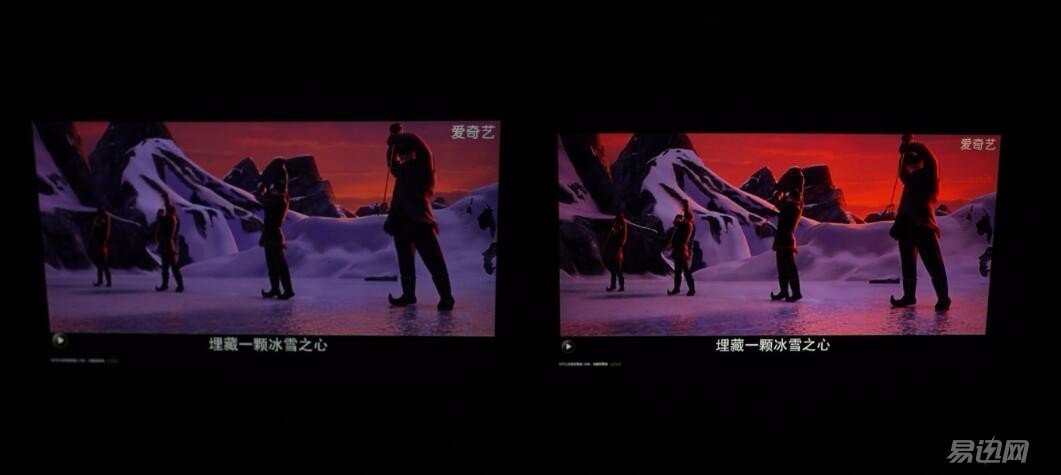
Keystone Comparison
When using a home projector, it is difficult to avoid having to project it obliquely due to space limitations. Fortunately, both projectors support keystone correction. Originally on the left side of the TW5300 is the Pro7827hd. Now I will turn them in the direction. The TW5300 will go to the right and the Pro7827hd will go to the left. The use of keystone correction will correct the picture. See if there is a loss of effect after the correction.
Or use the picture just before, this is the picture before the keystone correction (left side Epson CH-TW5300, right side ViewSonic Pro7827hd):
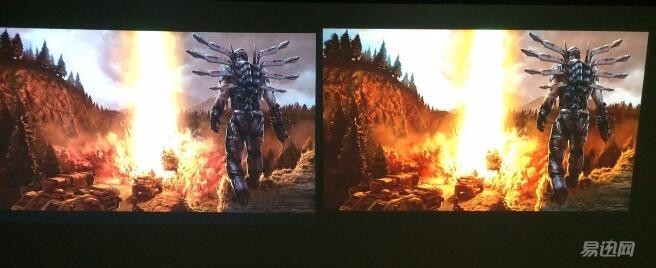
This is the left and right projection interchanged and trapezoidally corrected picture (ViewSonic Pro7827hd on the left, Epson CH-TW5300 on the right):

Zoomed in (ViewSonic Pro7827hd on the left, Epson CH-TW5300 on the right):

After trapezoidal correction, the Epson CH-TW5300 is not as clear, and its color is dimmed. If you can direct investment can also be, if the space restrictions need to sidecast, or ViewSonic's Pro7827hd has an advantage.
Display Test Comparison (Epson CH-TW530 on the left, ViewSonic Pro7827hd on the right)
Color transitions and grayscale performance are similar in both machines
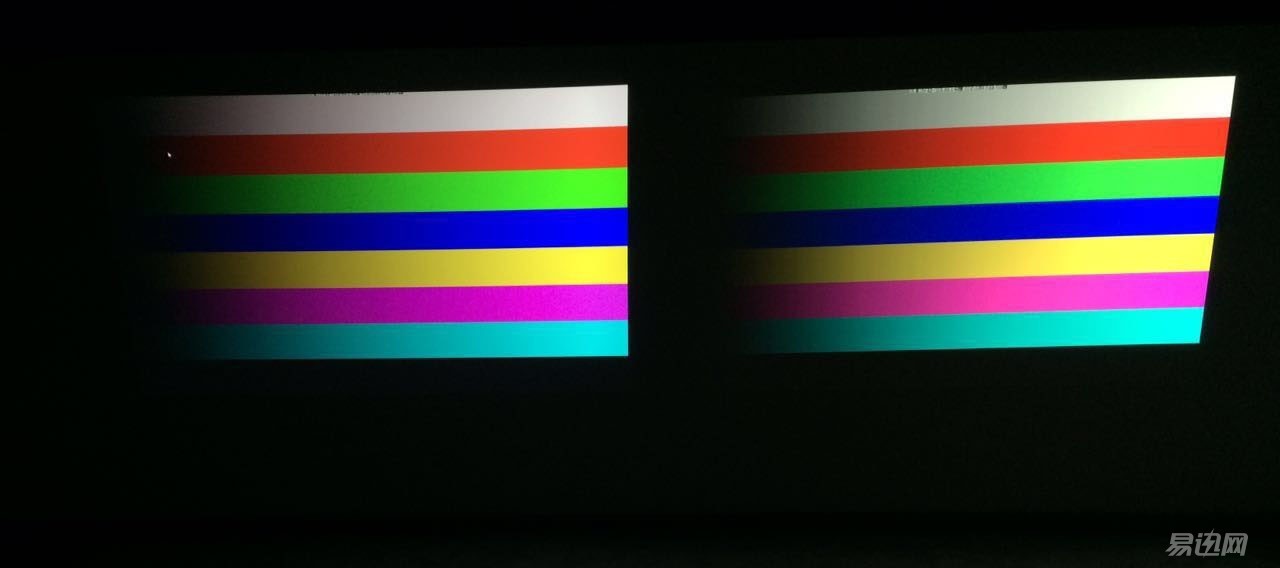

The white part of the TW5300 is pinkish and the black part feels like a light leak. Pro7827hd of DLP technology has spoiled the TW5300 of 3LCD technology in this respect.
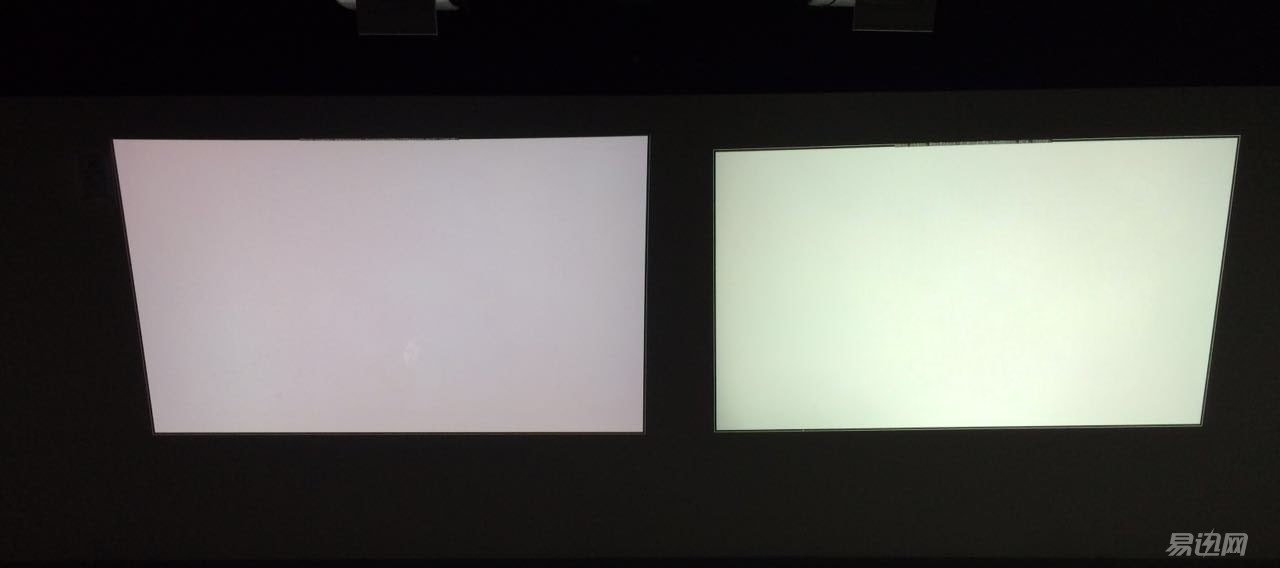
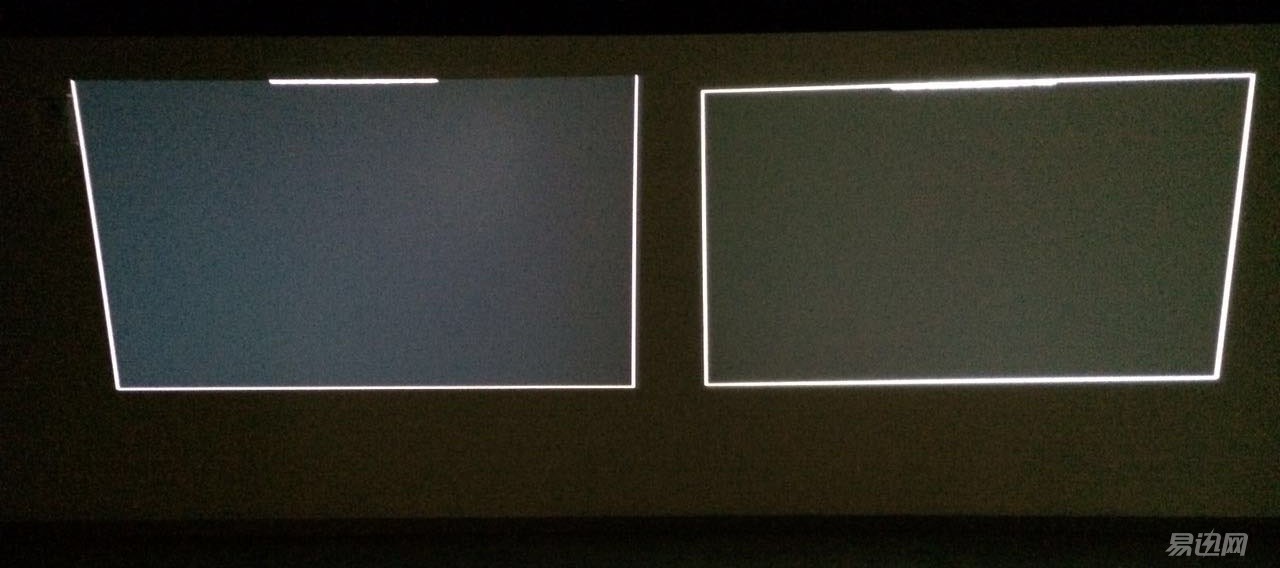
In the solid color part, the blue effect is similar to the two. The purple and cyan effect ViewSonic is slightly closer to the primary color than the epson. This is also in line with the color advantages of the REC.709 color gamut projector.
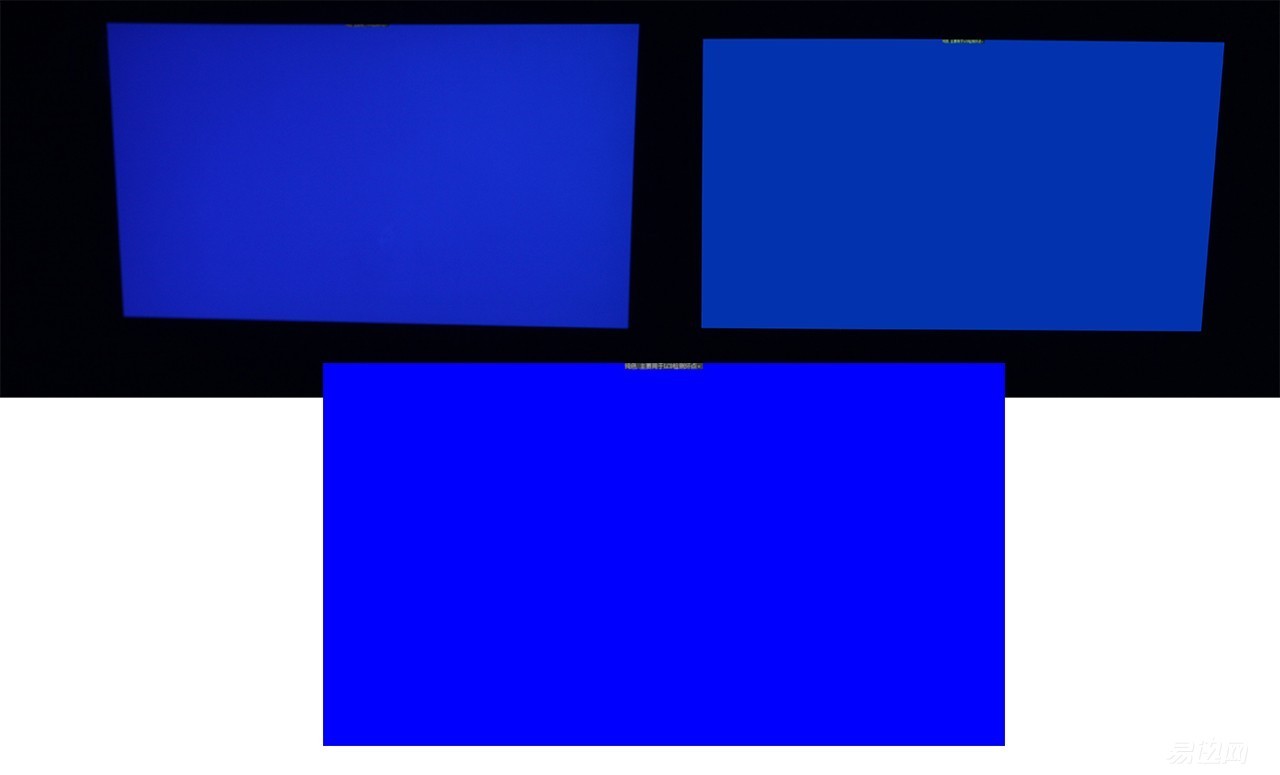


In the geometric shape test, there was no problem with ViewSonic's pro7827hd. The epson TW5300 line was slightly distorted, just like the tear that occurred when changing the straight line angle when drawing. The phenomenon of line tearing became more obvious after zooming. ViewSonic Pro7827hd can maintain the continuity of lines when zooming

to sum up
Among the above comparison tests, there are many items that are encountered in home use. The ViewSonic Pro7827hd is obviously stronger than the EPSON CH-TW5300. The advantage of LCD technology is that the color effect of transmission is good, but the LCD projection After the effect of solid color and trapezoidal correction, the effect will be greatly reduced, and the aging problem of the panel is also much more serious than DLP. Asked the neighbors that this ViewSonic was also purchased in Jingdong, the price is exactly the same as my EPSON, so after testing I have a little regret.